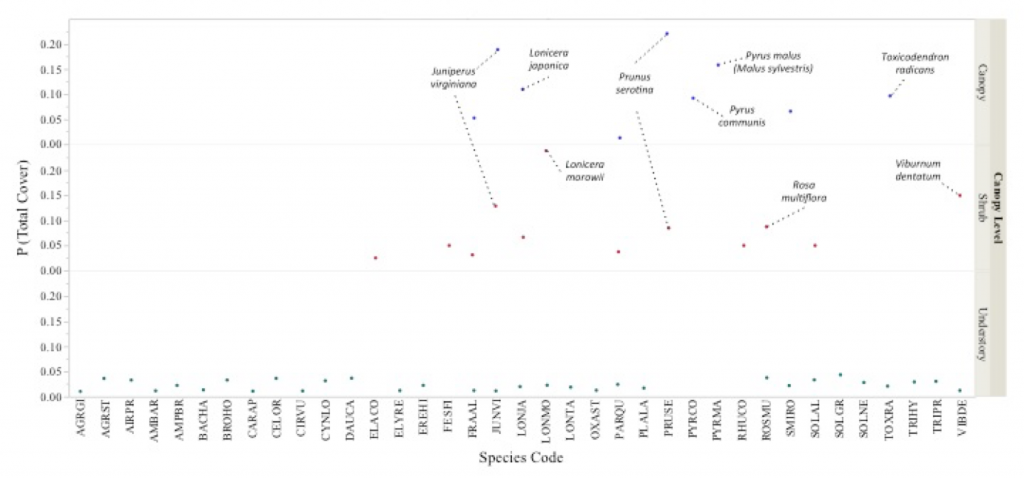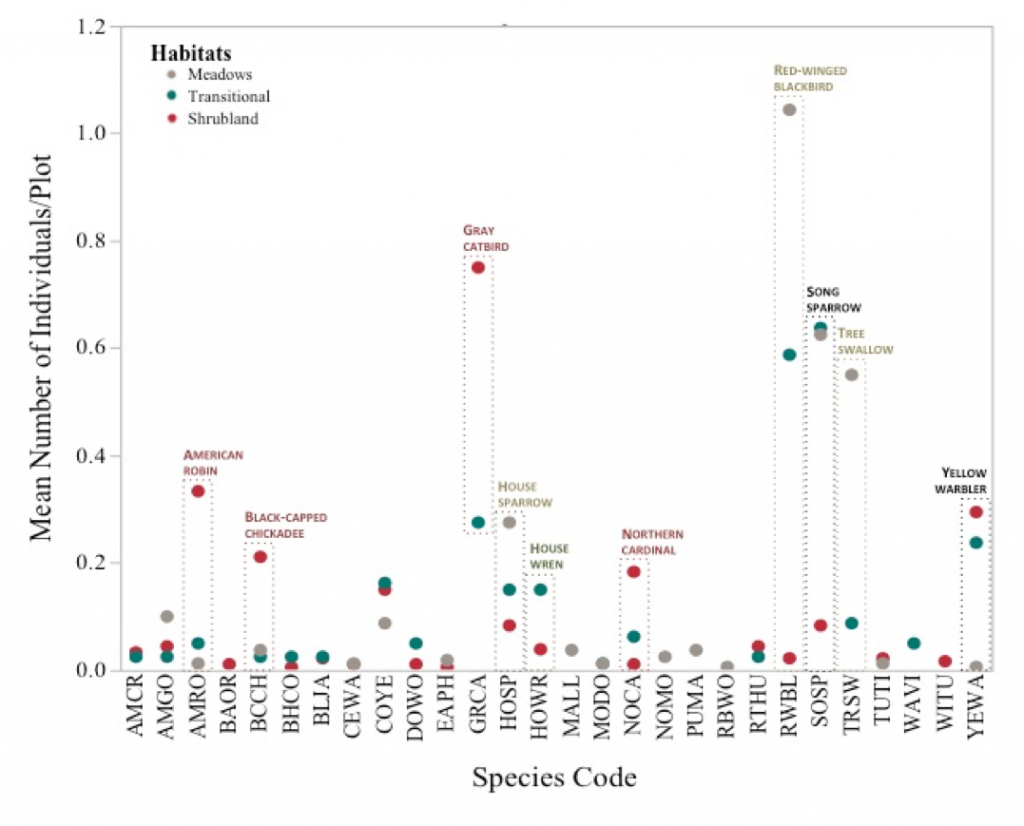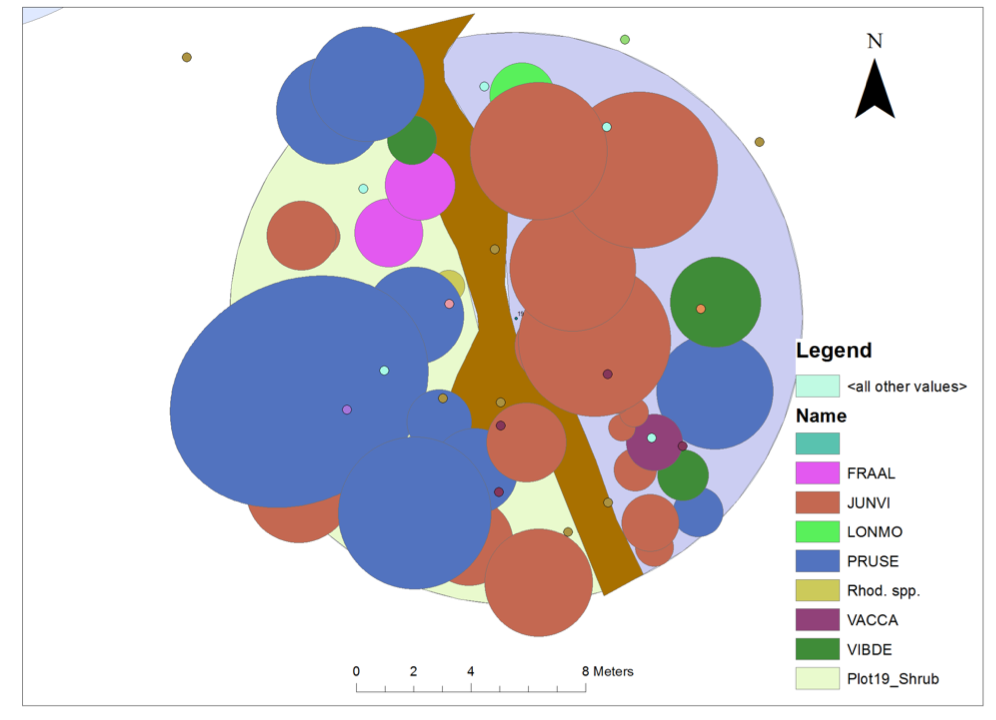Lab members who contributed to the following research include: Emily Hamilton (’17), Sarah Messenger (’18), Jordan Fisk (’17), Tracy Keza (’17), Lupita Barajas (’17), Cassandra Cronin (’17), Adam Hammershoy (’17) and Preston Stump.
Update (Jan. 2016): We’re working on finalizing data analyses and manuscript preparations for this project, so stay tuned here for updates, or contact me (cameron.douglass@trincoll.edu) if you’re interested.
Methods
Overview: Data collection for this study took place at Knox Preserve, located in Stonington, Connecticut. The site is 16.7 acres, is adjacent to Quiambaug Cove on Long Island Sound, and is owned and managed by the Avalonia Land Conservancy. Within the preserve three distinct habitats are present: a meadow, a shrubland, and a transitional area between the two along an old stone wall. Roughly half the preserve is comprised of the meadow, which includes a small saltwater marsh. The meadow area is dominated by creeping bentgrass (Agrostis stolinefera), annual ragweed (Ambrosia artemisiifolia), soft brome (Bromus hordeaceus) and several goldenrods (Solidago spp.). The shrubland is dominated by native trees such Black cherry (Prunus serotina) and Virgina red cedar (Juniperus virginiana), with a shrub layer of invasive honeysuckles (Lonicera spp.) and native Viburnum spp. Poison ivy (Toxicodendron radicans), green brier (Smilax rotundifolia)and Oriental bittersweet (Celastrus orbiculatus) are are also abundant in the shrubland area. The transitional area along the stone wall contains species from both of the other habitats, but also invasive vines such as black swallow-wort (Cynanchum louiseae) and porcelainberry (Ampelopsis brevipendiculata).
Survey Methods: We established a total of 21 circular plots throughout the Preserve for the purposes of sampling vegetation and birds. We established eight plots in the meadow and 4 in the transitional area that had a radius of 25 m. Nine plots, each with a radius of 10 m, were set up in the shrubland. Plant species present within each plot were recorded, and then the abundance of present species was measured using 1 m2 sub-plots. Plant species abundance in each sub-plot was measured for each pertinent layer of the canopy: ground (understory), shrub and tree canopy.
We sampled birds in each plot once a week from May 15, 2015 through July 17, 2015 using standard point count methodology. All birds seen and heard within each plots were recorded during a period of five minutes. We also marked the location of every bird seen or heard on a high resolution aerial photo of each plot using an Ipad. Using these aerial photos, the distance from plot center and the degrees from north for each bird observed, we could determine the location in latitude and longitude of each bird observation and thus place it within a specific vegetation community.
Preliminary Results

Mean plant species abundance (as a proportion of total estimated plot vegetation cover) by canopy level of the plant community at Knox Preserve. Note that with the exception of the shrub layer (which was dominated by invasive honeysuckle species), invasive species were not consistently dominant in the canopy and understory plant communities.

Mean bird species abundance (number of individuals per plot) in the major habitats at Knox Preserve. Overall breeding bird species richness at Knox Preserve was relatively low in all habitats, but there were important community differences in species abundance by habitat that are likely driven by underlying differences in the habitats in the plant communities and other food sources (i.e. insects).

Example of a geographic information system (GIS) visualization of bird species found within a sampling plot relative to dominant plant species at each level of the plant community canopy. We will use these types of spatially-referenced analyses to better quantify species level interactions between birds and plants.
